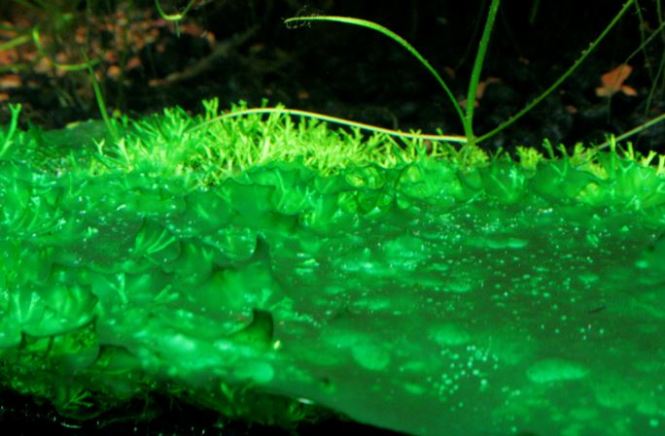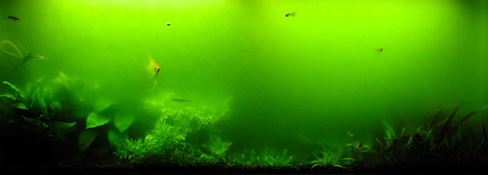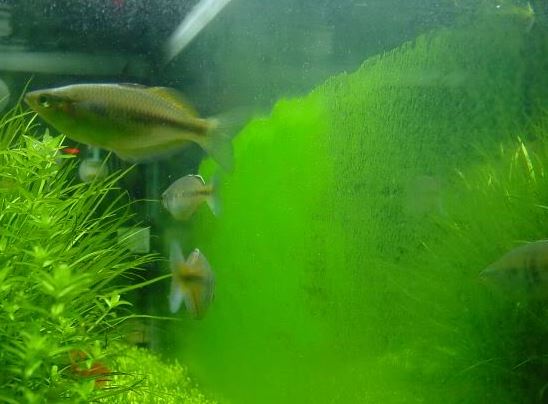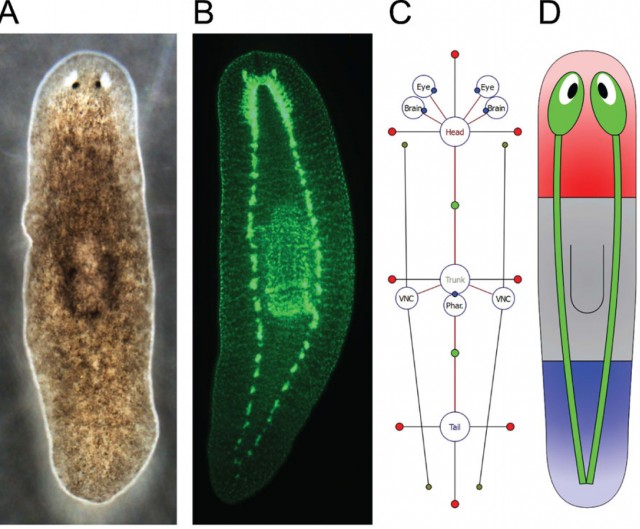Lately one of my customer tank come across green water & BBA. It’s important to let customer understand the root cause and how to solve it. Customer involvements is very important since we do provide maintenance service every month or twice a month. I create this page so that I can tag this page to my customer at the same time share to anyone that come across such problem. Hope it’s helpful to you all.
Below info quoted at :- http://www.theplantedtank.co.uk/algae.htm
Black Brush Algae, BBA
Description :- Often grows on leaf edges of slow growing plants, bog wood and mechanical equipment. Also sometimes it grows in fast flowing areas of the tank. Grows in mps or patches of fine black tufts up to about 0.5cm long.
Cause:- In a high light tank it is an indication of low or fluctuating CO2 levels or not enough water circulation around the plants. In a low light tank it is often due to changing CO2 levels.
Removal:- In a high light tank you will need to increase your levels of CO2 and/or improve water circulation around the plants. Scrub and cut off as much as you can first. Increase levels slowly to 30ppm or more but watch the fish to see if they are respiring heavily. Make sure you have good water flow around the whole tank along with some good surface movement. Adding a powerhead may help. If you have a low light tank without CO2 injection then not doing any water changes will help. This is because tap water often has lots of CO2 dissolved in it which causes CO2 levels in your tank to fluctuate. The algae respond to this a lot quicker than the plants do. Siamese Algae Eaters are known to eat BBA so can be used to control this algae. Overdosing Flourish Excel will clear.
Blue Green Algae, BGA
Description:- This isn’t a true algae, but a bacteria called cyanobacteria that is able to photosynthesise. Covers everything in a blue/green slimy mat. Easily peels off but grows back again very quickly. It can smell pretty foul. It is very commonly found in the substrate and especially along the front glass where is receives light.
Cause:- Often caused by very low nitrates. It is fairly common to have it growing in the substrate against the front glass from where it can spread. Sometimes it appears with new setups that have had light and ammonia present at some point. Dirty substrates and filters may also bring it on. Poor water circulation is another possible cause.
Removal:- A blackout is the best method for this. Clean out as much of the algae as you can and do a 30 to 50% water change. If your nitrates are low then add some potassium nitrate to get levels to 20ppm. Remove CO2 and add an airstone. Turn off lights and cover the whole tank so no light can enter. Leave it for 3 to 4 days. No peeking and no feeding – fish will be fine without food for this period. After 3 to 4 days remove the covers and do a 30 – 50% water change. Remove airstone and start CO2. You will need to dose nitrates to keep them dropping too low again. Make sure your substrate and filter doesn’t become too clogged up with mulm and also make sure you have good water circulation around the whole tank. Another option is to treat with Maracyn which is an anti-biotic. Seems to work well but may affect the biological filter. In the UK it is illegal to purchase Maracyn without first getting a prescription for it from a vet. If the BGA is originating from the substrate place some dark tape on the glass to hide the substrate from direct light.
Green Water
Description:- This is a unicellular algae. Water goes cloudy. Sometimes just a green tint, other times it can look like pea soup.
Cause:- Ammonia is often the main cause green water. There may have been an ammonia spike that isn’t detected with test kits. Other possible causes are an imbalance of nutrients and/or low CO2 levels.
Removal:- Large water changes do not seem to always help. If there is an imbalance in nutrients then fixing it will sometimes make it go away by itself after a while. A three day blackout followed by a large water change will hit it hard and sometimes may clear it. A UV steriliser/clarifier or diatom filter will clear it up very quickly and is often the only way to clear it. A new method is to use freshly cut 1-2 year old willow branches about 0.5-1cm in width. Place these in your tank vertically so they go from the substrate to a few centimetres above the water’s surface. After a few days they will start to grow roots and the green water should start to clear. When cleared remove the branches from the water. Don’t confuse this with a bacterial bloom which gives the water a white haze.
Green Dust Algae, GDA
Description:- Forms on the glass creating a dusty appearance across the glass. Sometimes so bad you can’t see into the tank
Cause:- Low CO2. Low nutrients. Quite common on new setups.
Removal:- Easily removed with a magnetic glass scraper or similar. Often reappears very quickly. Allow the algae to run its full cycle by leaving it well alone for 3 weeks. It may become unsightly but just bear with it. Then scrape it all off and do a large water change. Sometimes requires a second treatment to fully clear and leaving it for 4 weeks. Recommended to slightly reduce dosing during treatment.
Rhizoclonium
Description:- Strands of fine green or brownish threads which are soft and slimy.
Cause:- Low CO2 and poor water flow. Low nutrient levels. General lack of maintenance
Removal:- Increase CO2 levels and check nutrient dosing.Give the tank a good cleaning. Overdosing Excel also clear it. Amano shrimp will eat it.
Staghorn
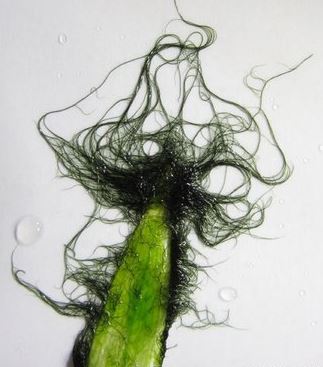 Description:- Grows in strands that branches out. Looks a bit like deer antler. Black to grey/green in colour and sometimes has a red tint
Description:- Grows in strands that branches out. Looks a bit like deer antler. Black to grey/green in colour and sometimes has a red tint
Cause:- Low CO2 and/or poor water circulation. A tank with overfed fish and accumulated mulm. Dirty filter. Alsodisturbing dirty substrates without doing water change afterwards.
Removal:- Check CO2 levels and make sure you have good water circulation. Reduce feeding, vacuum the substrate and remove mulm. Overdosing Flourish Excel.Complete usually helps


